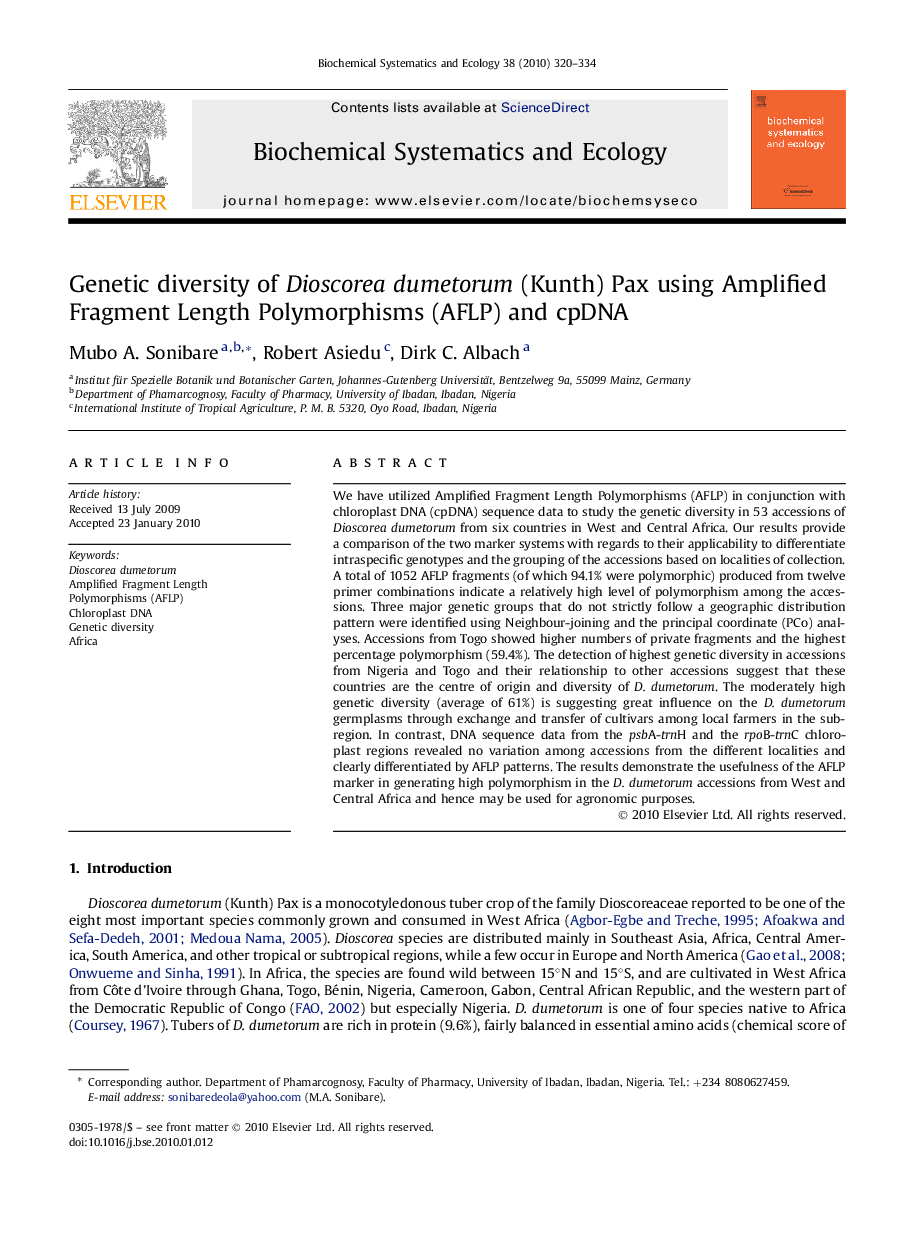| Article ID | Journal | Published Year | Pages | File Type |
|---|---|---|---|---|
| 1352069 | Biochemical Systematics and Ecology | 2010 | 15 Pages |
We have utilized Amplified Fragment Length Polymorphisms (AFLP) in conjunction with chloroplast DNA (cpDNA) sequence data to study the genetic diversity in 53 accessions of Dioscorea dumetorum from six countries in West and Central Africa. Our results provide a comparison of the two marker systems with regards to their applicability to differentiate intraspecific genotypes and the grouping of the accessions based on localities of collection. A total of 1052 AFLP fragments (of which 94.1% were polymorphic) produced from twelve primer combinations indicate a relatively high level of polymorphism among the accessions. Three major genetic groups that do not strictly follow a geographic distribution pattern were identified using Neighbour-joining and the principal coordinate (PCo) analyses. Accessions from Togo showed higher numbers of private fragments and the highest percentage polymorphism (59.4%). The detection of highest genetic diversity in accessions from Nigeria and Togo and their relationship to other accessions suggest that these countries are the centre of origin and diversity of D. dumetorum. The moderately high genetic diversity (average of 61%) is suggesting great influence on the D. dumetorum germplasms through exchange and transfer of cultivars among local farmers in the sub-region. In contrast, DNA sequence data from the psbA-trnH and the rpoB-trnC chloroplast regions revealed no variation among accessions from the different localities and clearly differentiated by AFLP patterns. The results demonstrate the usefulness of the AFLP marker in generating high polymorphism in the D. dumetorum accessions from West and Central Africa and hence may be used for agronomic purposes.
